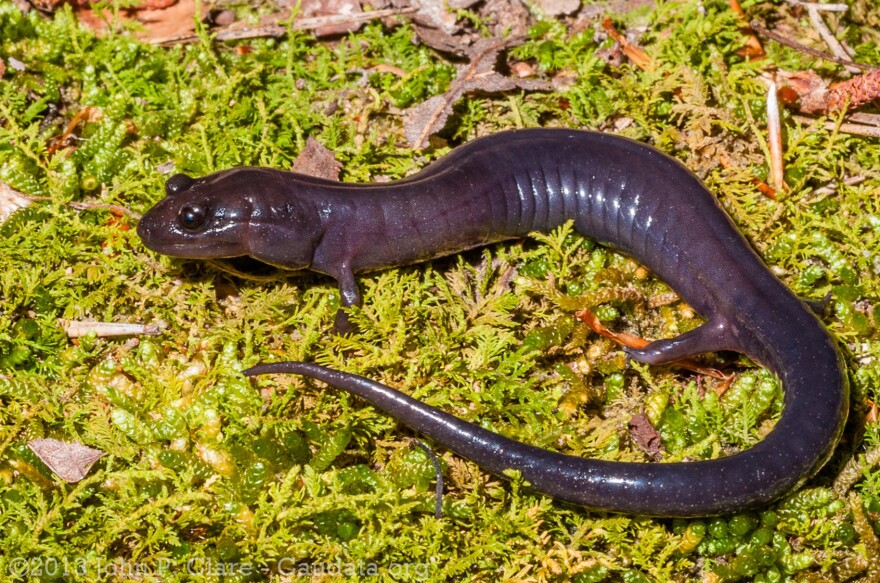One of the nation’s largest environmental organizations recently purchased thousands of acres of Alabama land in an effort to protect an endangered animal species. The Conservation Fund now owns 23,000 acres of forestland in Alabama’s Red Hills region. Most of the acreage lies in Monroe County between Montgomery and Mobile.
The Conservation Fund is a private nonprofit that acquires land across the country for ongoing conservation efforts and environmental restoration. The organization has purchased land in Alabama from private landowners for several decades, including major ridges and trails along the Appalachian Mountains and historic parks near the Gulf Coast. Andrew Schock is the organization’s regional director for the Upper Southeast area. Schock said this particular purchase was a long time coming.
“The opportunity to acquire the property has been looked at for about eight years, but nothing was able to come together for a variety of circumstances,” he said. “But recently, the landowner put the property for sale in a large package, what we call a bid package, and The Conservation Fund decided it was time to make the effort and bid to buy the land.”

The organization received a $17 million loan from the Pittsburgh-based Richard King Mellon Foundation to purchase the acreage from Conservation Resources, a conservation investment organization that has sustainably managed the forest since 2009. Schock said the purchase and preservation of Red Hills is all part of the nonprofit’s pursuit to protect one nighttime critter.
“This is the only place in the world where the Red Hills salamander exists,” he said. “Of course, it’s on any land conversationists’ radar screen.”
The Red Hills salamander is the only living terrestrial vertebrate that exclusively inhabits Alabama. It lives in roughly 60,000 acres of habitat that is constricted to the west of the Alabama River and the east of the Conecuh River. This area covers Conecuh, Covington, Crenshaw, Butler, Monroe and Wilcox counties.
“This is a relatively large salamander,” Schock said. “It can grow up to eight to 10 inches long. It happens to be the largest lungless salamander in the world. It’s a very special critter for the state of Alabama because it lives nowhere else in the world.”
According to the U.S. Fish & Wildlife Service, the slimy, nocturnal creature breathes through its skin and spends a large amount of its time waiting to ambush and eat invertebrate prey, from snails and insects to spiders and earthworms. The official state amphibian is also dark brown or gray-colored with minimal markings and known for its secretive nature, rarely leaving its dug habitats.
“The salamander inhabits the ridges that are formed in this part of Monroe County,” Schock said. “These ridges are not high, steep or tall hills, but they are ridges, where you have a lot of hardwood deciduous trees growing. This is somewhat unique to Alabama, where you have predominantly pine trees. Oftentimes, you find salamanders along streams and creeks. These salamanders don’t inhabit streams and creeks but rather these hillside ridges. They will burrow into the ground. The burrows are about the diameter of a dime, and, at night, they’ll come to the edge of their burrow and put their head out to wait for insects and other things to come along. That is their food.”
The Red Hills salamander was first listed as a federally threatened animal species under the Endangered Species Act in 1977. Schock said it is important to preserve the area to protect the salamander for generations to come.
“Do you want to be the cause of the extinction of the last remaining animal that is indigenous only to Alabama? You [may not] know why it's there, but it's there for a purpose,” he said. “If we remove the last one, we don't know what will befall the rest of the ecosystem and, therefore, the rest of us. It's a cog in the wheel. It is also a source of pride. This is something only in Alabama, so we should be prideful of that.”
Schock said preserving this animal species will also lead to greater state freedoms.
“When you can remove species off the endangered species list, then that means they are regulated by the state government,” he said. “They're no longer regulated by the federal government. That allows landowners to be able to do potentially more land management because they only need to work under the state regulations.”
However, that is not the only reason why The Conservation Fund purchased the at-risk forestland. The organization intends to harvest the area’s existing loblolly pine trees and reforest the Red Hills region with historic longleaf pine trees. It will also prescribe burning to enhance the habitats in the region. Schock said this reforestation process will positively impact the environment and economy of Southwest Alabama.
“The Conservation Fund is interested in maintaining a working forest landscape,” he said. “That's good conservation, good for climate change, climate resiliency and good for the economy. In these rural communities, if you can continue to be harvesting timber, that provides a lot of economic opportunities in the communities that are often centered around the timber industry as a primary economic driver.”
In addition to reforestation, the nonprofit plans to preserve the existing forestland, valleys and ridges. The Conservation Fund in a press release reports the Red Hills property, now named the Alabama Red Hills Salamander Forest, contains thousands of climate resilient acres, storing up to 3.5 million tons of CO2 equivalent. The organization said maintaining this acreage is comparable to removing 779,000 gasoline-powered passenger vehicles off the road for an entire year.
The Conservation Fund said it plans to temporarily own the land for four to seven years before handing long-term management over to its partner, the Alabama Department of Conservation & Natural Resources. In the meantime, the land will not be open to public use. Hunting will be allowed on the property through hunting leases.
Once management transfers to the state department, the land will be open for public use, including hunting, fishing, hiking, birdwatching and other outdoor activities. Schock said, at the end of the day, everyone benefits from this land purchase.
“This is a win, not only in protecting the salamander, which is something indigenous that Alabamians should be proud of, but it also will be opening up land for public use that has not been opened for public use in the past,” he said.
More information on the Red Hills salamander can be found by visiting the U.S. Fish and Wildlife Service website. More information on The Conservation Fund can be found here.


